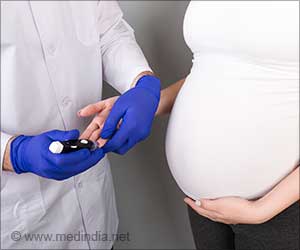It is important to learn about all the sun-related side effects of certain medications and how to protect yourself from side effects.
- Heat from the sun can destroy the components of a medication or a drug
- Heat intolerance is a feeling of being overheated when the temperature rises
- Instead of taking the medicine in the morning, it can be done at night
Explanations Involved in Heat Wave
Some drugs are more stable than others. Most are at their most stable when they are transported and stored at room temperature.Some medications that must be stored at room temperature can tolerate so-called ‘controlled excursions’ — short periods to accommodate needs such as shipping — at temperatures up to 86°F.
Some examples of medication storage recommendations include:
- Lipitor (atorvastatin calcium) and Norvasc (amlodipine besylate): Room temperature
- Toprol (metoprolol succinate) and Synthroid (levothyroxine): Room temperature; between 59°F and 86°F for excursions, if needed
- Veletri (epoprostenol): Between 35.6°F and 46.4°F
‘Heat Intolerance’: Its Definition and its Uses
It will be interesting to read warnings that some common medications can cause something called ‘heat intolerance’. Even common blood pressure and allergy medications can make a human more susceptible to heat.Some common medications inhibit the sweating response (cooling the skin is important), while others can cause dehydration in hot weather. Oral contraceptives and even ibuprofen can affect how some people tolerate heat.
The Food and Drug Administration spells it out this way: “There are two types of photosensitivity – photo allergy and phototoxicity.”
“Photo allergy is an allergic reaction of the skin and may not occur until several days after sun exposure. Phototoxicity, which is more common, is an irritation of the skin and can occur within a few hours of sun exposure.”
“Both types of photosensitivity occur after exposure to ultraviolet light — either natural sunlight or artificial light, such as a tanning booth.”
There are certain types of medicines that can cause sensitivity to the sun and some of them include:
- Alpha-hydroxy acids in cosmetics
- Antibiotics like ciprofloxacin, doxycycline, levofloxacin, ofloxacin, tetracycline, trimethoprim
- Antihistamines like cetirizine, diphenhydramine, loratadine, promethazine, cyproheptadine
- Cholesterol lowering drugs like simvastatin, atorvastatin, lovastatin, pravastatin
- Diuretics like thiazide diuretics: hydrochlorothiazide, chlorthalidone, chlorothiazide; other diuretics like furosemide and triamterene
- Non-steroidal anti-inflammatory drugs like ibuprofen, naproxen, celecoxib, piroxicam, ketoprofen
- Psoralens like methoxsalen, trioxsalen
- Retinoids like acitretin, isotretinoin
- Sulfonamides like acetazolamide, sulfadiazine, sulfamethizole, sulfamethoxazole, sulfapyridine, sulfasalazine, sulfasoxazole
- Sulfonylureas for type 2 diabetes like glipizide, glyburide
Medications and the Sun’s Heat Wave: The Connection?
This is why it’s so important to learn about all the sun-related side effects of certain medicines and how to protect yourself.“Sometimes the reaction can take weeks or months for it to fade,” said Dr. Riza Conroy, who practices family medicine at the Ohio State University Wexner Medical Center.
Conroy said that some medications that don’t go well with the sun include some antibiotics, antidepressants, antihistamines, anti-inflammatories and medications for blood pressure and diabetes.
For diabetics, Conroy said that bring a cooler when you’re out as the heat can degrade insulin and other medicines.
“Put the medication, especially insulin, in the cooler and keep it nice, cool and dark,” Conroy said.
Conroy said that sun-related side effects of medications usually develop about 24 to 72 hours after sun exposure. They may appear to be an exaggerated sunburn.
When possible, Conroy says to instead of taking the medicine in the morning, it can be done at night and follow the SunSmart steps:
- Slip on clothing that covers the body.
- Slop on SPF 15 to 30 or higher broad-spectrum, water-resistant sunscreen.
- Slap on a hat.
- Seek shade, avoiding the sun between 10 am and 2 pm.
- Slide on sunglasses with UV protection and side panels.
- If the sun causes a reaction, talk to your doctor. They may have you stop taking your medication or lower the dose. Topical or oral treatments can help.
Source-Medindia








